Indigenous Governance Database
Native youth
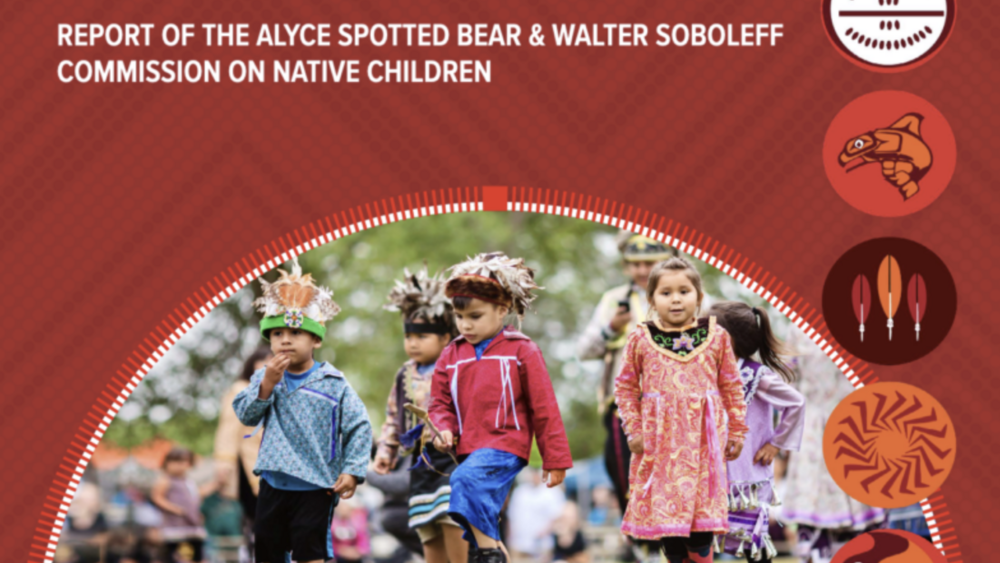
The Way Forward: Report of the Commission on Native Children
Congress created the independent Alyce Spotted Bear and Walter Soboleff Commission on Native Children in 2016 to conduct a comprehensive study of the programs, grants, and supports available to American Indians, Alaska Natives, and Native Hawaiians from birth through age 24 and with making…
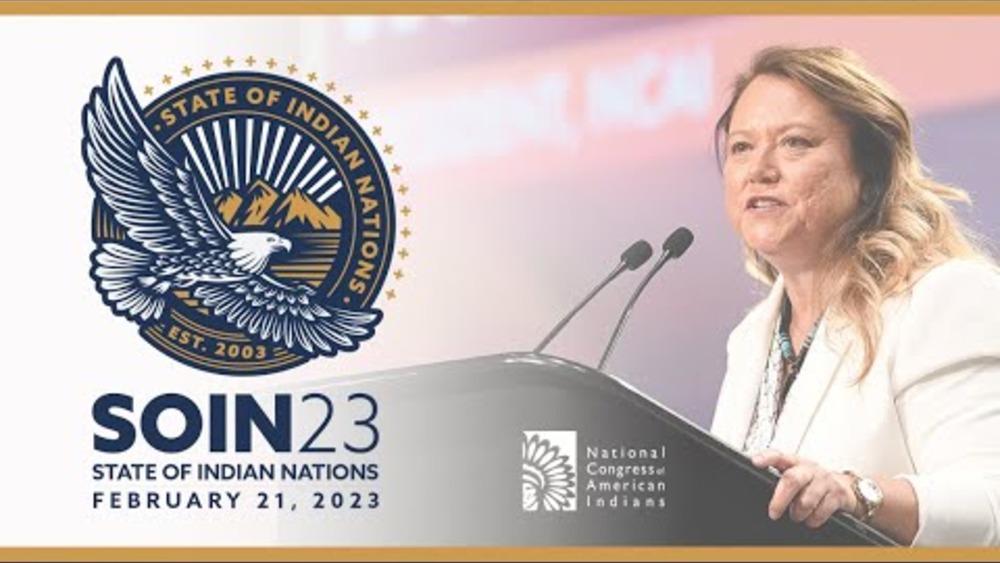
State of Indian Nations 2023 Address (SOIN23)
Each year, the President of the National Congress of American Indians presents the State of Indian Nations address to members of Congress, government officials, tribal leaders and citizens, and the American public. Typically delivered during the week that the President of the United States delivers…
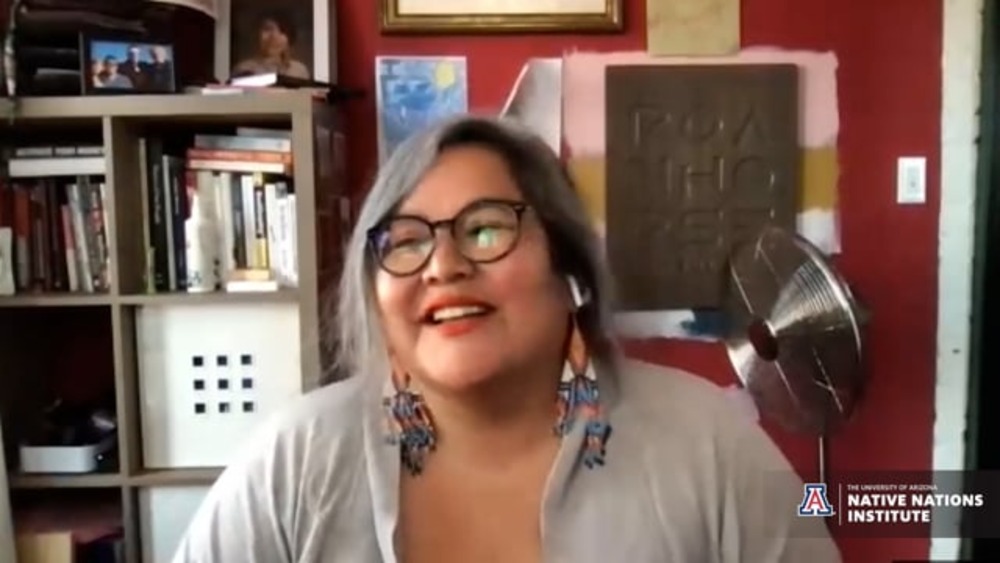
Vanessa Roanhorse Keynote Address: Native American Youth Entrepreneurship Program 2021
Vanessa Roanhorse (Navajo) is the CEO of Roanhorse Consulting, an Indigenous women-led think tank that co-designs wealth and power-building efforts that invest in Indigenous entrepreneurs. She is also the co-founder of Native Women Lead, a national organization dedicated to growing Native women…
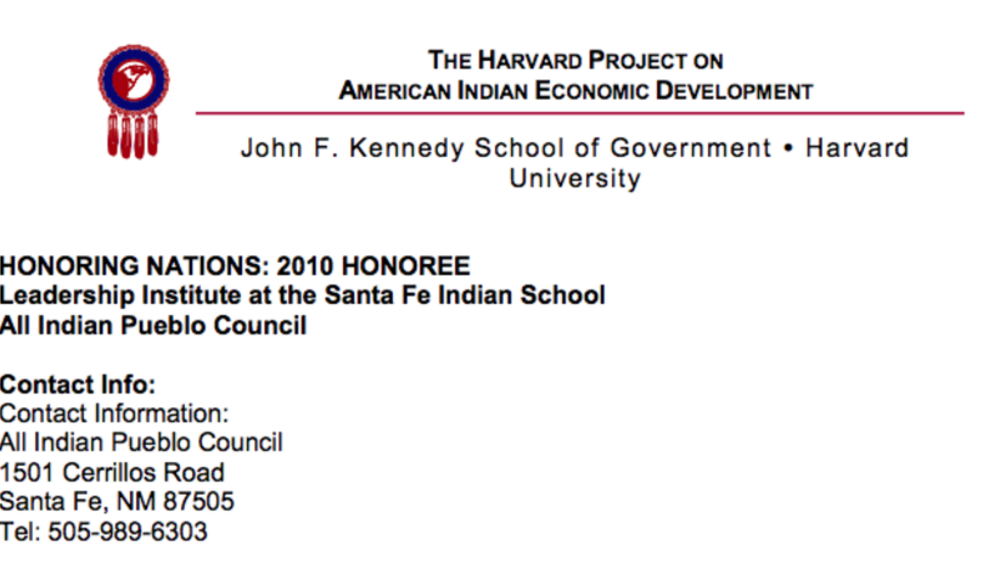
Leadership Institute at the Santa Fe Indian School
Founded in 1997, the Leadership Institute at the Santa Fe Indian School aims to create a dynamic learning environment in which community members not only learn and teach, but are able to actively contribute to the success of their nations. Four themes guide the Institute’s work: leadership,…
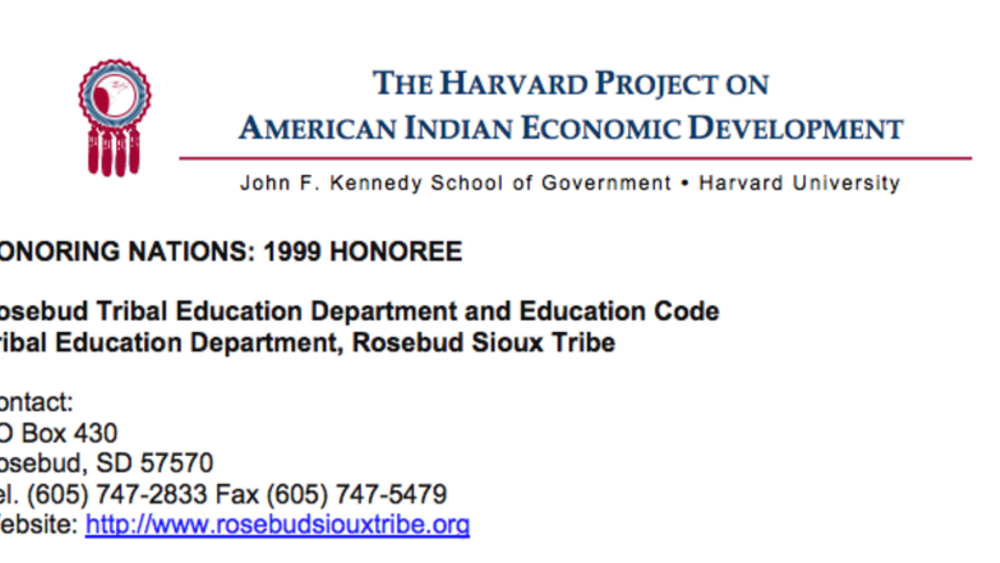
Rosebud Sioux Tribal Education Department and Code
Responding to disproportionately low academic attendance, achievement, and attainment levels, the Tribe created an education department (TED) in 1990 and developed a Code that regulates and coordinates various aspects of the tribal schools, public schools, and federally-funded Indian education…
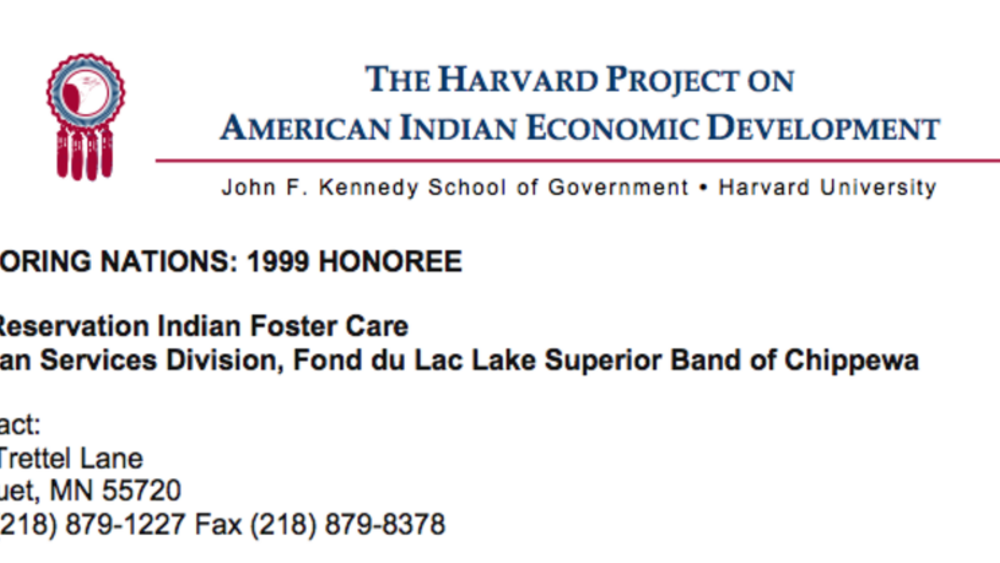
Fond du Lac Off-Reservation Indian Foster Care
By creatively reacting to state laws regarding foster home licensing, the Band established a foster care agency that dramatically reduced the number of Indian children in non-Indian foster care while simultaneously increasing the number of Indian children in Indian foster care. The agency has…
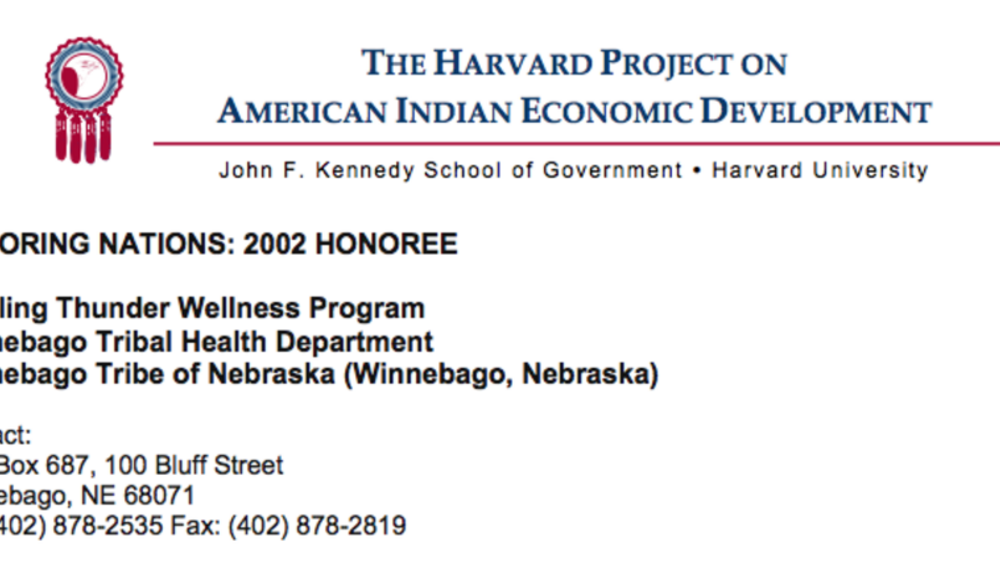
Winnebago's Whirling Thunder Wellness Program
To prevent and control the devastating effects of diabetes and substance abuse, in 1995, the Winnebago Tribe created the Whirling Thunder Wellness Program, which raises community awareness about diabetes and substance abuse, administers primary and secondary prevention services, and encourages…
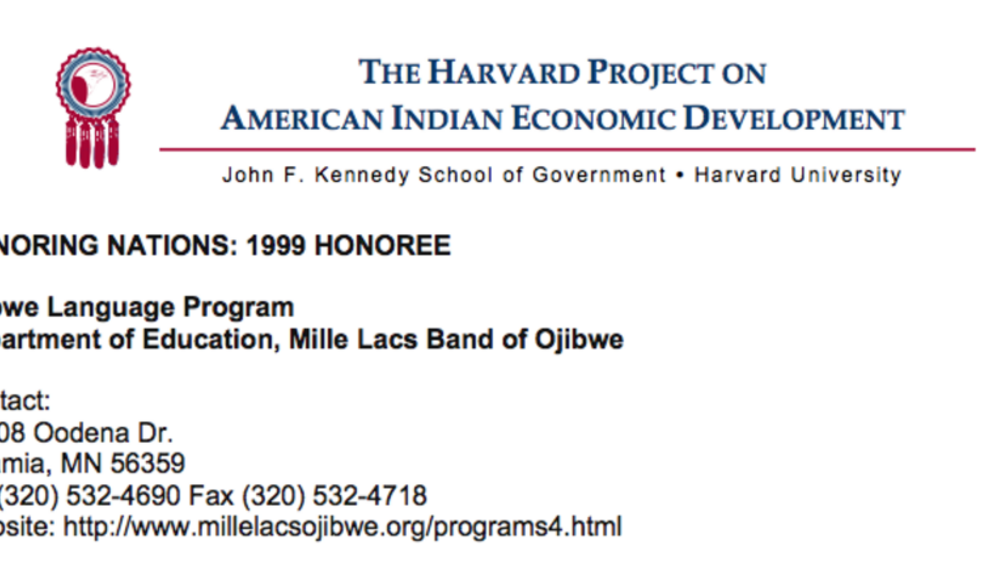
Mille Lacs Ojibwe Language Program
Created in 1995, this tribally funded program serves 350 students (from toddlers to teenagers) and uses elder-youth interaction, song books, and comic books to teach the Ojibwe language. In addition, the Program broadcasts language classes to local public schools in an effort to teach the Ojibwe…
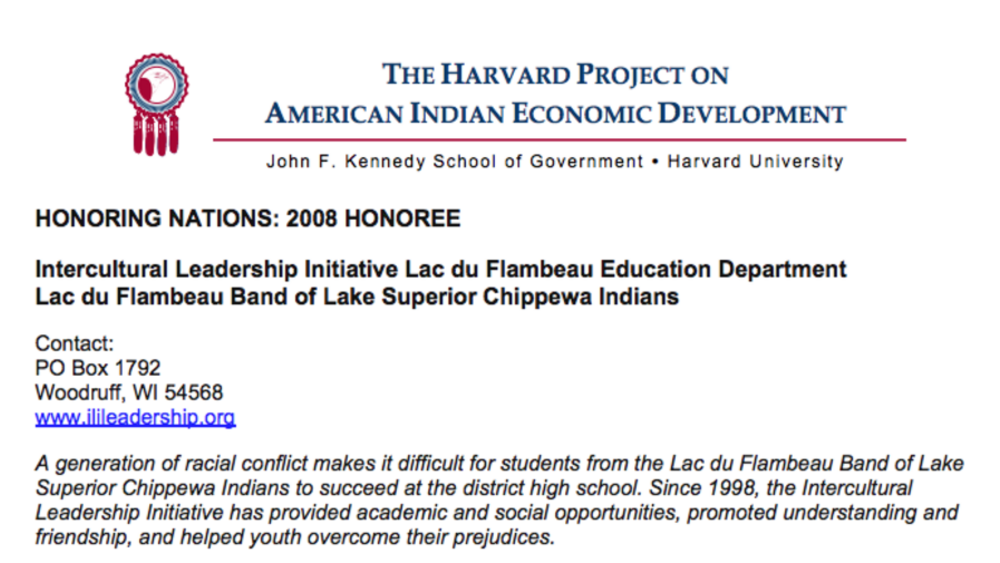
Lac du Flambeau's Intercultural Leadership Initiative
A generation of racial conflict makes it difficult for students from the Lac du Flambeau Band of Lake Superior Chippewa Indians to succeed at the district high school. Since 1998, the Intercultural Leadership Initiative has provided academic and social opportunities, promoted understanding and…
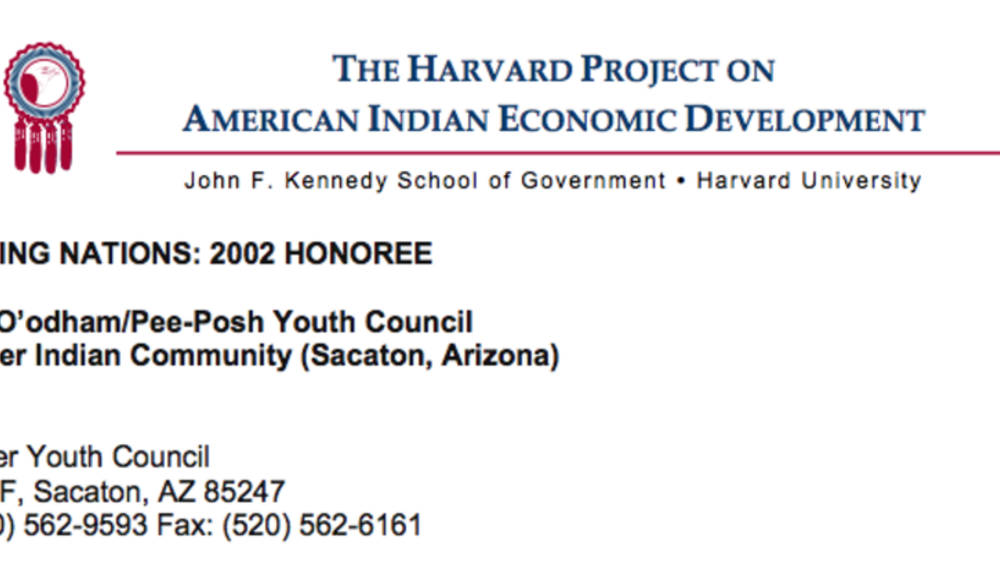
Akimel O'odham/Pee-Posh Youth Council
Recognizing that their youth possess critical insight on a full range of governing issues, tribal leaders chartered the Akimel O’odham/Pee-Posh Youth Council in 1988 to give youth a formal voice within the tribal government. The Council is comprised of 20 youth between the ages of 14-21, who are…
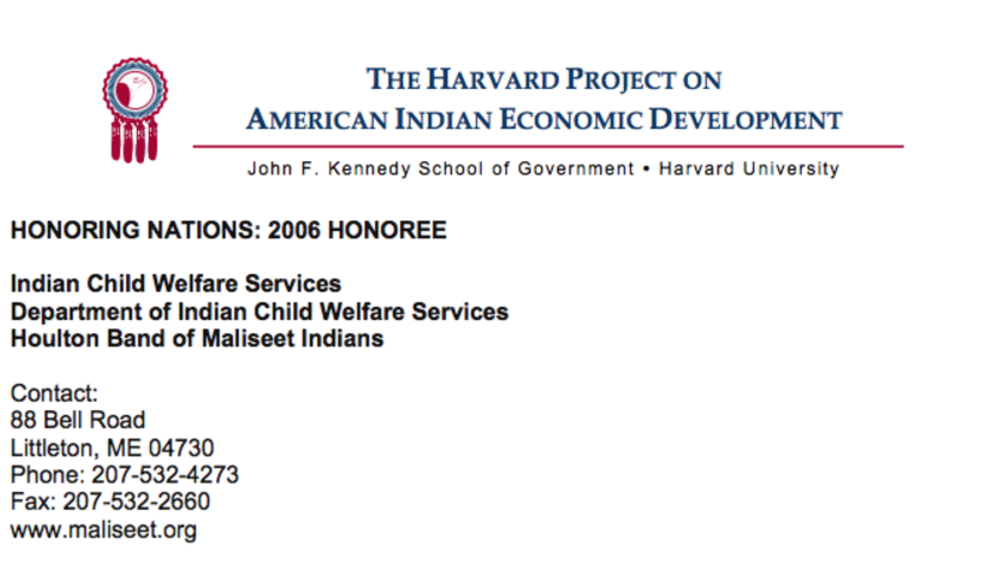
Houlton Band Indian Child Welfare Services
Seeking to establish collaborative working relationships with the state while firmly asserting sovereignty over Maliseet children, a Child Welfare Department was formed by the Houlton Band. The department created a Child Protective Team made up of professionals and volunteers to review and seek…
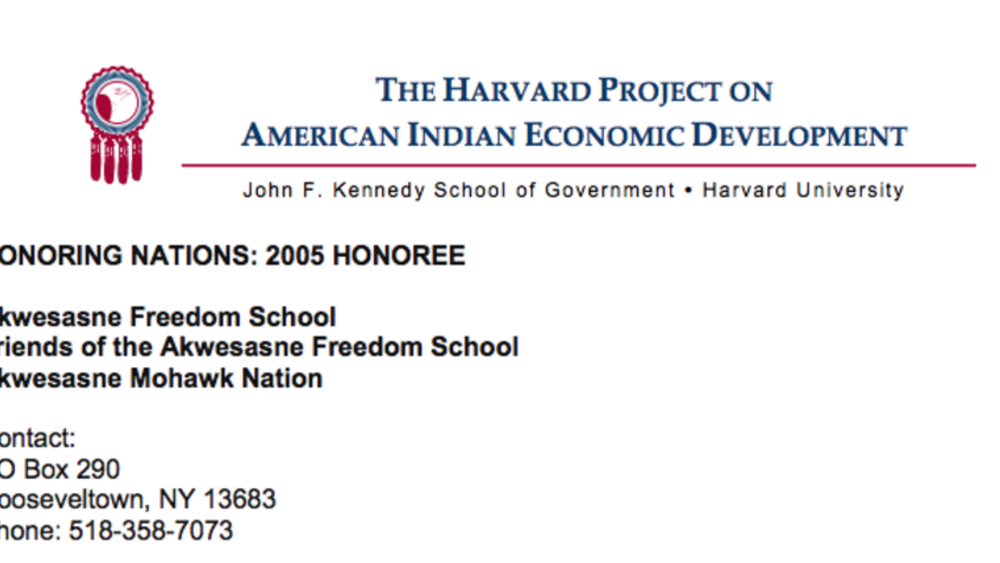
Akwesasne Freedom School
In 1979, the Akwesasne Freedom School took form out of the Mohawk struggle for self-determination and self-government. It is characterized by a deep commitment to the maintenance of Mohawk identity. Students in this pre-kindergarten through 8th-grade language immersion school begin and end each…
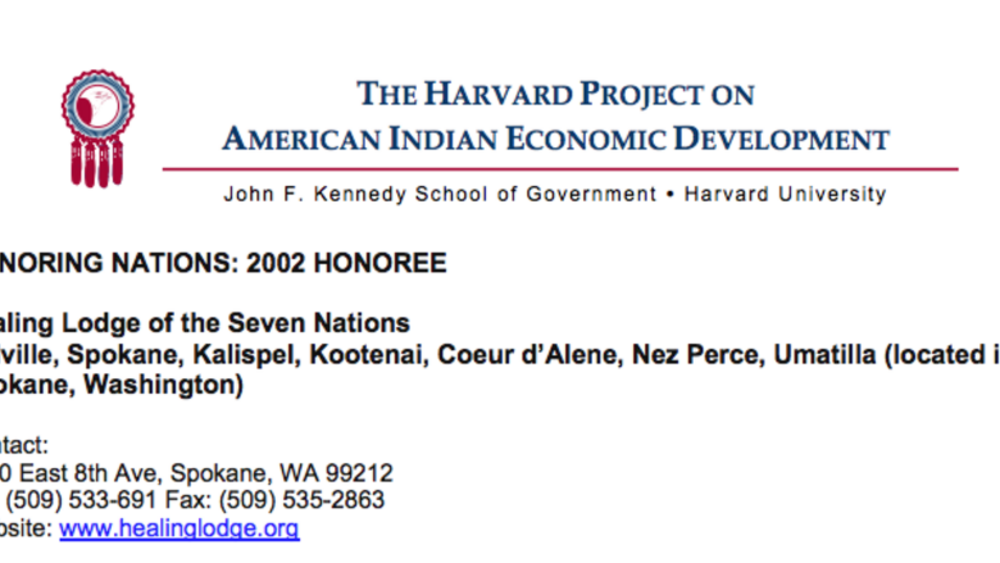
The Healing Lodge of the Seven Nations
Owned by a consortium of seven tribes, the Healing Lodge is a treatment center that helps Native American youth and their families heal from the trauma of alcohol and drug abuse. With a focus on blending culture and spirituality with mental health/chemical dependency treatment, services include in-…
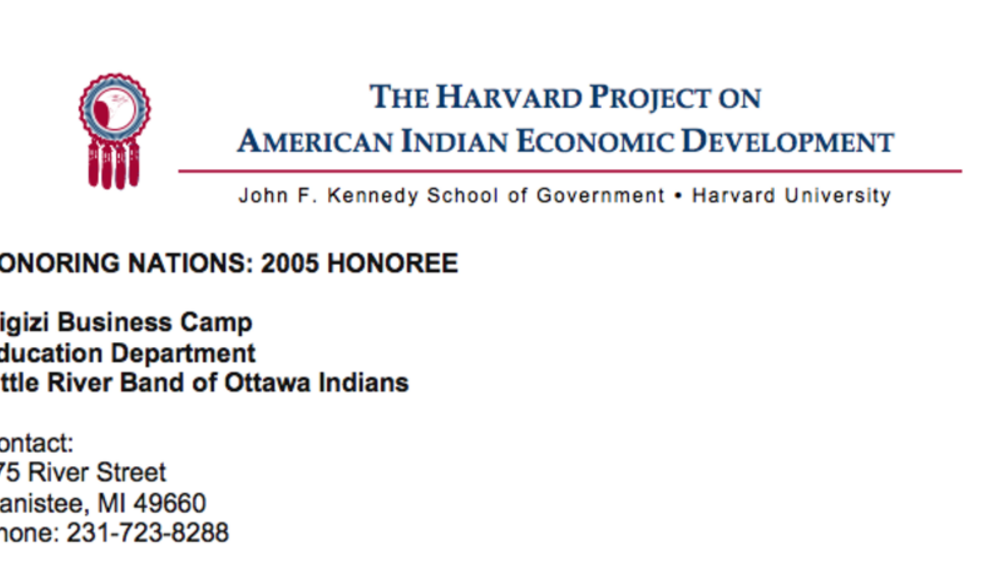
Migizi Business Camp (Little River Band)
In 1994, after 120 years of struggle, the Little River Band of Ottawa Indians finally re-obtained federal recognition. Ever since, tribal priorities included strengthening self-governance and the tribal economy. Their economic strategy followed two paths: the development of tribal enterprises and…
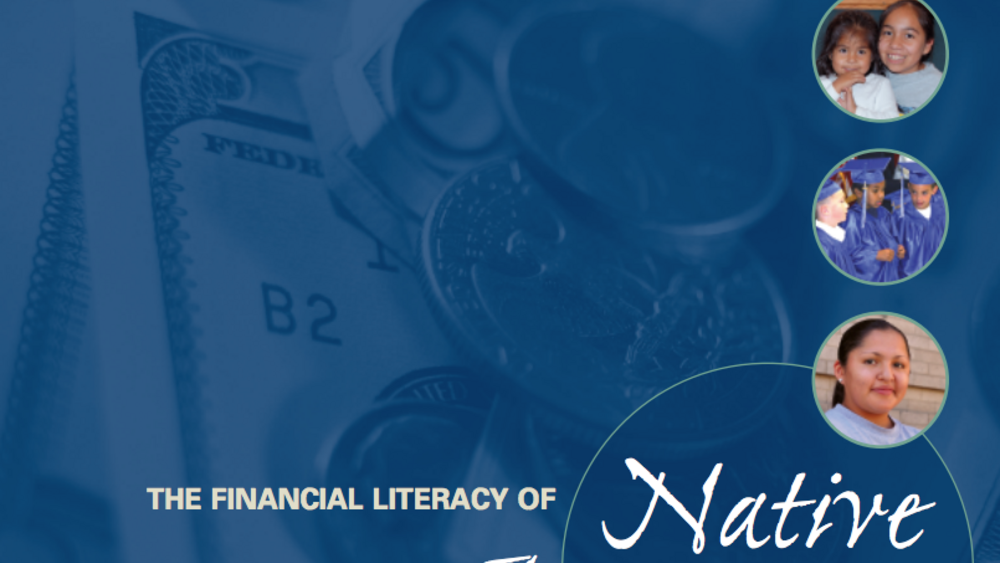
The Financial Literacy of Native American Youth
Tests of high school students conducted by the Jump$tart Coalition for Personal Financial Literacy indicate that Native American youth are less prepared to make informed financial choices than most of their peers. Jump$tart and the members of the Native Financial Education Coalition (NFEC) are…
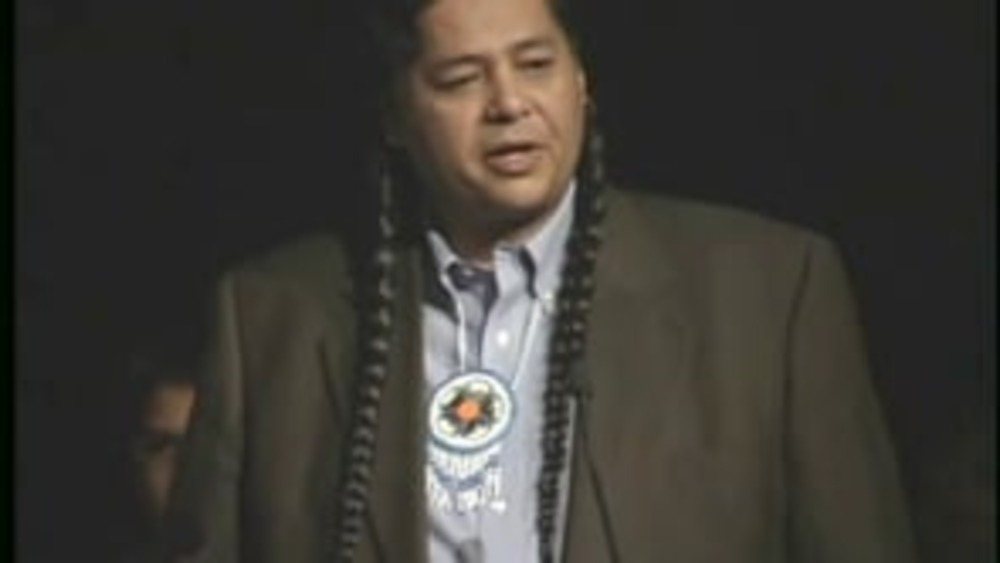
Honoring Nations: Lee Sprague: Migizi Business Camp
Lee Sprague (Little River Band of Ottawa Indians) presents an overview of the Migizi Business Camp to the Honoring Nations Board of Governors in conjunction with the 2005 Honoring Nations Awards.
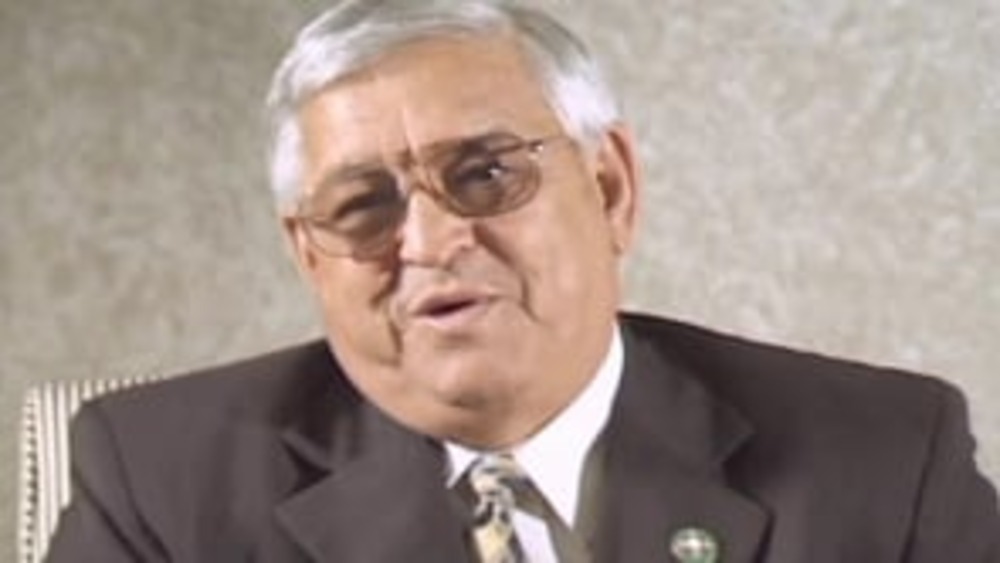
Great Tribal Leaders of Modern Times: Eddie Tullis
Produced by the Institute for Tribal Government at Portland State University in 2004, the landmark “Great Tribal Leaders of Modern Times” interview series presents the oral histories of contemporary leaders who have played instrumental roles in Native nations' struggles for sovereignty, self-…

Cheyenne River Youth Project's Garden Evolving Into Micro Farm
When the Cheyenne River Youth Project started its organic garden in 1999, staff at the 26-year-old nonprofit would never have guessed where the little garden would take them. The two-acre Winyan Toka Win–or “Leading Lady”–garden is the heart of the youth project, and is becoming a micro farm.…
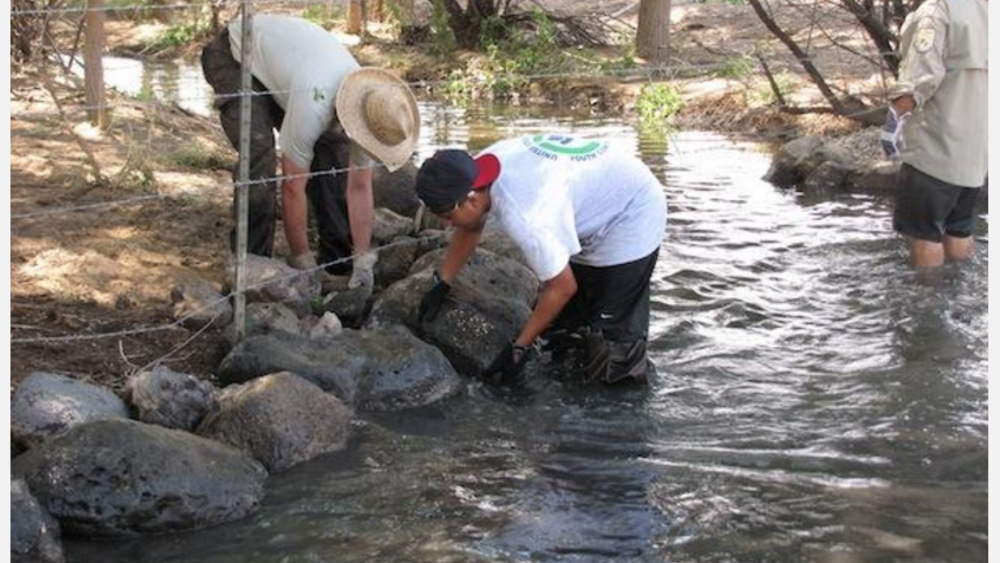
Indigenous Youth Help USFWS Restore Fish Passage on Cochiti Pueblo
Ask a group of teenagers their idea of fun and you might get answers like hanging out with friends, dodging opponents during a game of laser tag or playing their favorite video games. But for a group of Native American youth from several of New Mexico’s pueblos, fun meant working outside on a warm…
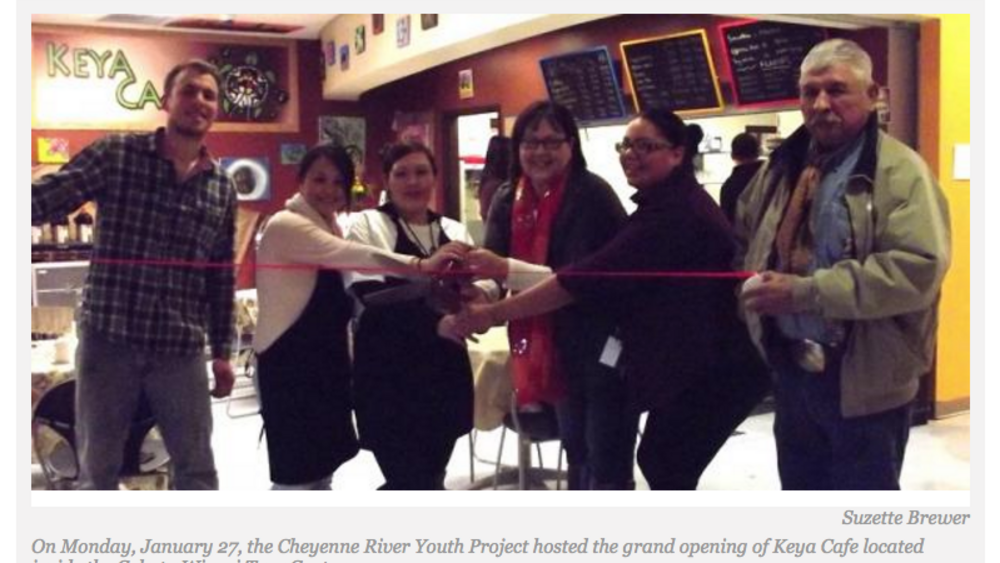
Cheyenne River Youth Project Turns 25, Launches Endowment and Keya Cafe Featuring Homegrown Food
Twenty-five years ago, Julie Garreau (Cheyenne River Lakota) developed the Cheyenne River Youth Project (CRYP) from a converted bar on Main Street in the tribe's capital Eagle Butte, South Dakota. For 12 years she volunteered her time to get an after-school program off the ground...
